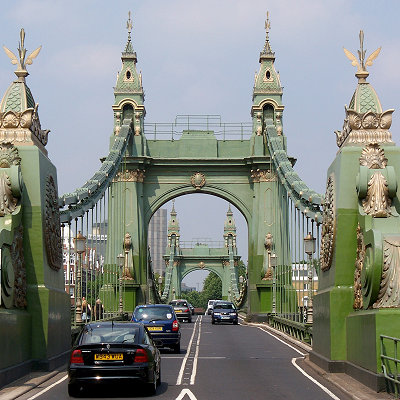
Like us on Facebook
PLACE NAMES


 
|
|
Hammersmith
|

| |
Hammersmith is a district in west London, located in the London Borough of Hammersmith and Fulham.
It is bordered by Shepherds Bush to the north, Kensington to the east, Chiswick to the west, and Fulham to the south, with which it forms part of the north bank of the River Thames. It is linked by Hammersmith Bridge to Barnes in the southwest. The area is one of west London's key commercial and employment centres, and has for some decades been a major centre of London's Polish community. It is a major transport hub for west London, with two London Underground stations and a bus station at Hammersmith Broadway.
In the early 1660s, Hammersmith's first parish church, which later became St Paul's, was built by Sir Nicholas Crispe who ran the brickworks in Hammersmith. It contained a monument to Crispe as well as a bronze bust of King Charles I by Hubert Le Sueur. In 1696 Sir Samuel Morland was buried there. The church was completely rebuilt in 1883, but the monument and bust were transferred to the new church.
The Hammersmith Suspension Bridge, designed by William Tierney Clark, was built across the Thames in 1827, and rebuilt in 1893. In 1984-1985 the bridge received structural support, and between 1997 and 2000 the bridge underwent major strengthening work.
In 1745, two Scots, James Lee and Lewis Kennedy, established the Vineyard Nursery, over six acres devoted to landscaping plants. During the next hundred and fifty years the nursery introduced many new plants to England, including fuchsia and the standard rose tree.
Major industrial sites included the Osram lamp factory at Brook Green, the J. Lyons factory (which at one time employed 30,000 people). During both World Wars, Waring & Gillow's furniture factory, in Cambridge Grove, became the site of aircraft manufacture.
|
 Feel free to Email me any additions or corrections Feel free to Email me any additions or corrections
LINKS AVAILABLE TO YOUR SITE
| |





